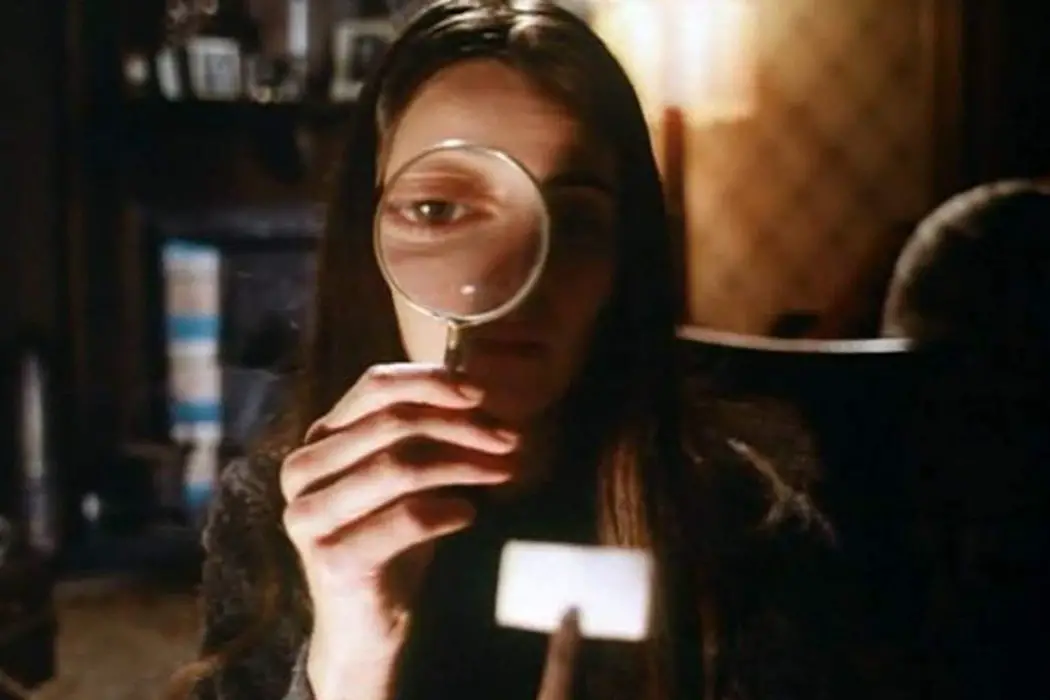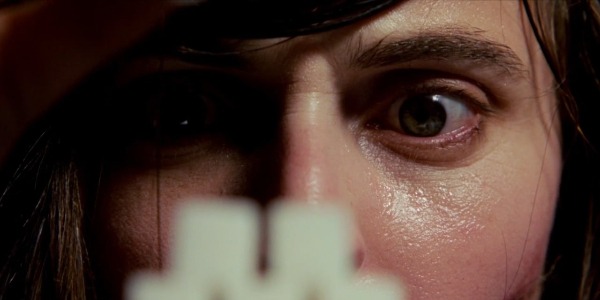NEXT OF KIN: Australia’s Lost Horror Classic Back From The Dead

Alex is a 28 year-old West Australian who has a…
There’s a reason why the 1980’s are so revered within horror film communities; each year delivered a number of beloved classics that are still being remade, sequelised and rebooted to this day. For this review, we must look back at 1982, a year that unleashed a murderer’s row of genre-defining touchstones; The Thing, Poltergeist, Creepshow, Basket Case, Halloween 3: Season of the Witch and Tenebrae are just a handful of its offerings, but each has had a major influence on today’s output of horror titles – all except for one, a particular film which could’ve had the same reputation if given the chance back in the day.
Made during Australia‘s “Ozploitation” boom, which saw a deluge of horror, sex and action exploitation films flooding the market thanks to a helpful tax loophole, a little film called Next of Kin came out, a title largely overshadowed by the Patrick Swayze film of the same name (despite coming out seven years later).
The Lost Horror Gem
Made as an opportunity to capitalise on the popular Ozploitation wave of the time, Next of Kin is an anomaly, both in its aesthetics and its distribution history. Despite featuring the same level of blood, boobs and car crashes that characterised its fellow genre contemporaries, Tony Williams’ (a prolific television commercial director) European inflection towards this typical haunted house story not only made it stand out back then, but has allowed it to age supremely well – think more Diabolique than Die Hard. After languishing in obscurity for several decades – only available through a ridiculously expensive out of print Australian DVD – Next of Kin is finally receiving the mighty release is so surely deserves.

Using the properties of Umbrella Entertainment’s long-awaited release from last year, Second Sight’s Blu-ray disc of Next of Kin is giving UK audiences the chance to check out this lost film, one whose reputation has been single-handedly kept alive by cinema’s biggest genre-savant Quentin Tarantino, who infamously said that it had a “very unique tone, and the closest equivalent to this tone is The Shining”, a comparison that Williams’ seems quite proud of in one of the disc’s two seperate retrospective commentary tracks.
The film’s eerie tone is skilfully established instantly when Linda Stevens (Jackie Kerin) visits a rundown roadside diner situated in the Australian outback, a barmy hole-in-the-wall establishment that cleverly forms a level of ambiguous dread and an unmistakeable atmosphere of uncertainty that shrouds the rest of the film; there’s an Edgar Wright-level of subtle narrative setups littered within the joint, as Linda grabs a bite to eat before she heads to Montclare, a monolithic retirement home that she’s just inherited from her late mother.
Once inside the creaky confides of Montclare, Linda is immediately struck by its unsettling nature – and not just because of the unusual cavalcade of seniors that call the place home. The place seems more like an old Hammer Horror film set than a gentle nursing home, and Linda’s general (and understandable) distrust of her surroundings are further enhanced when she finds a diary from her deceased mother, who scribes observations that mirror her daughter’s current situation. Aided by her lackadaisical but loving boyfriend Barney (John Jarratt, known to international audiences for the Wolf Creek series), it’s up to Linda to follow those voices in the night and discover what’s really going on – or end up like her departed parent.
Australia’s Argento
The comparison to The Shining is apt, as New Zealand director Tony Williams, in his second (and as of today, final) film focuses on atmosphere and aesthetics over character and story; despite being our main character, Linda is kept just as evasive and distant as the residents around her. She’s more of a conduit to allow the scares to happen, rather than an active participant in the film’s thin (but still accomplished) plot.
Williams and co-writer Michael Heath keep us isolated from the real world – both geographically and spiritually – thanks to an ingenious mixture of disconcerting images, a patient slow-burn structure and an experimental blend of various visual devices, adroitly conceived by cinematographer Gary Hansen; dizzy tracking shots down spiral staircases, slow motion chase scenes and haunting close-ups all pull the audience into the same bewildered headspace as the character in the centre of it all.

Where most Australian slashers during the 1980’s were replicating the framework and tired tropes of their American associates – the peak period of Friday the 13th, Halloween and Texas Chainsaw Massacre clones – Williams’ opted for a more European flavour, replicating the look and feel of Italian giallo masters like Dario Argento and Mario Bava, as well as the psychological terror of Roman Polanski’s early work.
This is most evident in its distinctive score, which comes from German electronic musician Klaus Schulze (the original drummer for Tangerine Dream, which is abundantly clear when hearing his work). As pointed out in Williams’ informative commentary track (where he’s joined by the film’s producer, Tim White), an original score was written by Schulze, but quickly rejected because their temp soundtrack, a series of old tracks from his rich discography, provided to be a much better fit and they were right – watching the film you can barely tell.
The Disc’s Features
The film did actually receive theatrical distribution in Australia in 1982 – which scored it a Best Editing nomination at the AFI Awards that year – but largely disappeared from the public and cinematic consciousness after that. A tragic death of the film’s main financier near the end of production majorly disrupted their traditional distribution plans, which is what resulted in it languishing in obscurity for so many years. It’s a damn shame, as watching it in 2019, you can only feel frustrated at what a wide release could’ve done for Williams – who shows an expert level of tone and narrative control – and horror fans in general for the past four decades.
Alongside a crisp, but understandably grainy, remaster of the original film, Second Sight’s release has ported over the multitude of special features from the previous Australian Blu-ray release; two seperate commentary tracks (the second re-uniting the film’s primary cast alongside film historian Mark Hartley), Tony Williams’ 1971 short films, a retrospective look at the original shooting location of the Montclare Retirement home and extended interviews with Williams and the main cast taken from Hartley’s essential Ozploitation documentary Not Quite Hollywood, which was a major contributing factor in bringing the film back into people’s purview.
Next of Kin: Conclusion
As an Australian film enthusiast, it warms my heart to see lost Australian genre titles being revived with such care and dedication. It welcomes a future where other films that are currently stuck in the forgotten format of VHS could potentially have a future in this new era of old school genre appreciation.
Next of Kin is more than just a simple curiosity, it’s an interesting chapter in one of the most important decades of Australian cinematic history, a horror film that feels simultaneously ahead of its time and also a nostalgic artefact of the type of experimental film-making that was occurring at the time. Between this and World on a Wire this year, Second Sight is doing some amazing restoration work – now we wait for their highly anticipated Dawn of the Dead release!
Do you have any particular favourite Ozploitation films? Let us know in the comments below!
Second Sight Films’ release of Next of Kin arrives on Bluray, Download and On-Demand in the UK on the 25th March 2019, which is available from Amazon UK or Second Sight Films’ website.
Does content like this matter to you?
Become a Member and support film journalism. Unlock access to all of Film Inquiry`s great articles. Join a community of like-minded readers who are passionate about cinema - get access to our private members Network, give back to independent filmmakers, and more.












